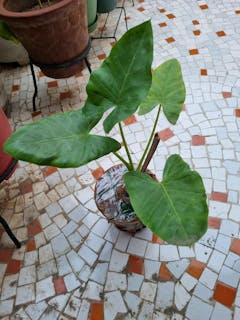Most succulents need to be watered twice a week during summers and only once in monsoon & winters. Varieties like Haworthias, Crassulas and Gasterias are well suited for low-light indoors and window-sills. If the leaves get too bulky, it is a sign of overwatering & if the leaves look shrivelled it is a sign of less watering.
As a general rule of thumb, all the ones with colourful leaves like Echeverias, Sedeveria and Graptopetalum like bright sunlight and semi shade in extreme summers. They cannot be kept indoors or in full shade. All succulents love morning sun.
You can fertilise your succulent once a month.
Watering tips : Make sure NOT to water on the plant itself. Water directly in the soil. You can use a cup or a glass to make sure the water does not spray on leaves. When watering, make sure water comes out of the drainage hole.
You can check our video on how to water succulents on : https://youtu.be/GnzodkMYcmg
Most succulents need to be watered twice a week during summers and only once in monsoon & winters. Varieties like Haworthias, Crassulas and Gasterias are well suited for low-light indoors and window-sills. If the leaves get too bulky, it is a sign of overwatering & if the leaves look shrivelled it is a sign of less watering.
As a general rule of thumb, all the ones with colourful leaves like Echeverias, Sedeveria and Graptopetalum like bright sunlight and semi shade in extreme summers. They cannot be kept indoors or in full shade. All succulents love morning sun.
You can fertilise your succulent once a month.
Watering tips : Make sure NOT to water on the plant itself. Water directly in the soil. You can use a cup or a glass to make sure the water does not spray on leaves. When watering, make sure water comes out of the drainage hole.
You can check our video on how to water succulents on : https://youtu.be/GnzodkMYcmg
Cissus rhombifolia
Description
Cissus rhombifolia, commonly called grape ivy, is a vigorous evergreen climbing vine that is a popular indoor plant because of its beauty and ease of culture. It is best grown in hanging baskets or on trellises. In its native habitat, vines will typically grow to 10 or more. Trifoliolate, toothed, glossy, deep green leaves with ovate to diamond-shaped leaflets appear on stems covered with reddish hairs. Leaflets usually have silky brownish hairs beneath. Insignificant greenish flowers may appear in summer followed by dark berries.
Origin: Central & South America
Family: Vitaceae
Height: 3 -6
Light: Place English ivy in a location where they get filtered light, such as a bright window. North or West facing windows are best as these do not allow direct sunlight all day. In harsh sunlight, they become bleached or dry. Ivies respond well to artificial fluorescent light conditions. Place your Succulents 6" to 10" from the fluorescent tubes.
Water: Water thoroughly but infrequently. When the soil feels dry, gently add water to the soil until the surface is totally wet and the water drains out of the bottom of the pot. Then do not water again until the soil is almost dry. Do not allow pots to stand continually in water..
Humidity: Mist the leaves several times a week with a spray bottle. Mist your plant more frequently in the summer growing season- the more water you can supply the blooms, the healthier it will be.
Temperature: Growth may cease completely below 70 F, but will resume when warmer weather returns. In winter, English Ivy Succulents need a 6 week rest period at a with little water. This allows the plant to flower profusely again in the following season.
Soil: Any good potting mix that drains well. Mix of potting soil and orchid soil or perlite will provide the kind of soil English Ivy prefer.
Fertilizer: Variegated Succulents also need less fertilizer than green-leaved ivy because they're less able to use the extra nutrients. Over-fertilizing these Succulents can cause build-up of fertilizer components in the soil, which can interfere with the ability of roots to take up water. This can also cause leaves to turn brown..
Landscape Uses: Hanging baskets, containers or as a vine on a room-dividing trellis.
Eliminates: Airborne pollutants including Benzene, Trichloroethylene, and Formaldehyde from the air.
Caution: This variety is toxic to pets and harmful if injusted.
















